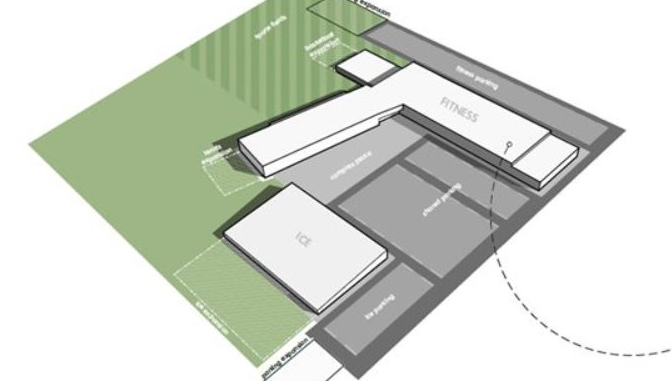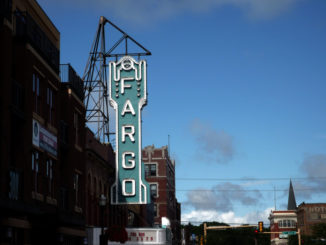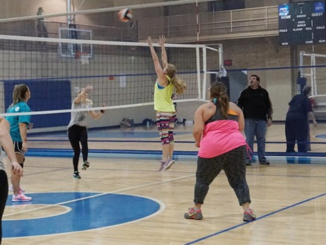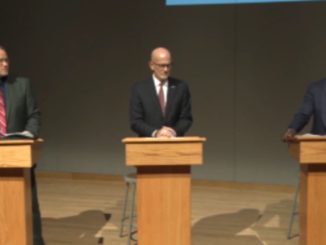
The term “conservative” just doesn’t seem to have the meaning that it once did in politics. In fact, I’ve become increasingly hesitant to even use the word at times. It seemingly means different things to different people these days.
One need only look at something like The American Conservative Union ratings for North Dakota to see this. While it’s not a perfect measuring stick — which is, again, kind of the point — a number of our so-called Republican legislators can’t even crack 50%. Yet, they’ll stand among constituents and claim themselves to be “conservative”.
I think of a number of things when I think of conservatism and one of them is, “The belief that taxes should be lower and government smaller.” This element was included in an article titled, “What Americans Mean When They Say They’re Conservative“. It appeared in The Atlantic in January of 2012. The staff writer who wrote the article included this element in a list of 21 “beliefs” he had observed “various Americans mean when they use the word [conservative].”
I think it’s fair to say that most people associate low taxes and smaller government with conservatism— even if some lawmakers are awful at making those things a reality. But are lawmakers the only ones guilty of portraying themselves as conservative, while advocating for policies or projects that are anything but? Not at all.
Case in point is the recently proposed $114.5 million recreation center in Bismarck. I first wrote about this back in November when we urged residents to put a kibosh to the idea.
The Feasibility Study for the 25-acre complex was presented to the Board of Park Commissioners last month. It’s quite telling and should raise the eyebrows of anyone willing to read it. Here’s some key points — with emphasis added — taken verbatim from page 16 of the study:
- “It is a goal to minimize the amount of subsidy necessary to operate the indoor community recreation complex.”
- “Normally, it is extremely difficult for public recreation facilities to be run without subsidy and solely from the collection of fees and charges and alternative funding such as grants, philanthropic gifts, or volunteers.”
- “Since recovering all the operating expenses through revenues generated by the facility is not the norm or the envisioned outcome, revenues should be viewed as ‘goals’ as much as they are considered ‘projections.'”
- “… it is possible that revenues and expenses could change as this facility experiences several years of operations.”
- “There is no guarantee that the estimates and projections will be met, and there are many variables that cannot be accurately determined during this conceptual planning stage or may be subject to change during the actual design and implementation process.”
I suppose we should give credit for honesty. A subsidy is exactly what it will take to keep the mega-plex afloat financially. As we shared in November — and as is illustrated on page 18 of the study — the projected shortfall in Year 1 is nearly $465,000. Who pays for that? I think you know— the taxpayer, through the park district levy. And don’t forget— “revenues and expenses could change”. Is that for better or worse? Nobody knows. I’m guessing the latter. But who cares when taxpayers are on the hook, right?
And let’s not forget that the $114.5 million budget to build the thing is the mid-range figure. According to page 19, the Budget Range comes in at a low of $108.8 million to a high of $120.2 million.
Then there’s the question of, “What are some options on how to pay for this?” According to the Frequently Asked Questions document from Bismarck Parks and Recreation District (BPRD):
“That very important question was asked in the Facilities Master Plan. Some of the options on how to pay for a large recreation complex include increasing property tax for Bismarck residents, increase user fees, sell bonds, implement a city sales tax, apply for grants and seek out public/private partnerships. The survey results favored public/private partnerships, which means using a combination of private fundraising and public funds, like a sales tax.”
As it turns out, the Park Board voted in favor of requesting that the Bismarck City Commission place a proposal on the June ballot to increase sales tax by a half-cent. Is it possible that’s a tactical move? After all, June elections typically have a lower turnout, which might just benefit those who support this project. But I digress.
If a public-private option became a reality using the sales tax, it would mean a half-cent increase that would sunset when the bonds used to fund the project are paid in full. If all went as planned, just 5 – 10% of the building costs would be funded through private donations.
We can already get a sense, from the following statement, of how supporters of the complex are going to frame their argument for funding it. Again, from the Frequently Asked Questions document:
“According to the North Dakota Tax Department’s 2018 State and Local Taxes report, a family of three earning $50,000 would expect to pay $66 more per year ($5.50 per month) in sales tax with a ½ cent increase.”
There’s a couple of problems with this approach. First, we don’t know that these figures are even accurate— by their own admission. Second, this doesn’t factor in what appears to be a perpetual annual shortfall that taxpayers have to pick up. And none of this even considers whether the government should have a role in building this in the first place.
Even if construction for the complex came in at $108.8 million, and private funding accounted for 10% of that figure, that would leave $97.92 million to the taxpayers. This represents $1,343.85 for every man, woman, and child in Bismarck. And at the end of the day, someone has to pay that.
What’s baffling in all of this is that some avid supporters of this project are self-proclaimed “conservatives”. These folks, who would otherwise cry foul at the mention of tax increases or bigger government, somehow throw all that out the window when it’s their pet project.
Perhaps the saddest part of it all is that they sound like the very people they’d otherwise criticize. Why do we need this rec center? “Wellness and public health!”, they cry. “Because it’s absolutely needed!”, they say. Sounds kinda Bernie Sanderish if you ask me.
It’s also interesting that these same people will remind us that government never builds projects like these to make money. And they feed us a line like that after trying to convince us that this is an “investment”. So, which is it? You can’t use the verbiage of a business project on one hand and then tell us it’s not business on the other. Remember, investments are supposed to make money, not lose it.
Believe what you may, but I just don’t think that subsidies and raising taxes fit the historic mold of what it means to be a conservative.
Look, if these folks want to lead the charge by advocating for this Temple of Wellness — built to the gods of public health — then so be it. But can we at least stop pretending that raising taxes to fund it — and subsidizing it in perpetuity — is somehow admirably conservative? It’s not.
No, aside from leaving the money in the pocket of taxpayers, there’s far better things that could be done with this kind of money. The residents of Bismarck need to ensure that this dream never becomes a reality.
PLEASE LIKE & SHARE!
Sources:
- http://acuratings.conservative.org/wp-content/uploads/sites/5/2019/09/CLA_NorthDakota_Ratings_2019.pdf
- https://www.theatlantic.com/politics/archive/2012/01/what-americans-mean-when-they-say-theyre-conservative/252099/
- https://theminutemanblog.com/2019/11/21/bismarck-residents-need-to-put-kibosh-to-114-5-million-rec-center/
- https://www.bisparks.org/wp-content/uploads/Bismarck-Feasibility-Study-12.19.19.pdf
- https://www.bisparks.org/wp-content/uploads/Frequently-Asked-Questions-Recreation-Complex-1-17-2020.pdf
- $1,343.85 for every man, woman, and child was calculated using the most recent population figure (72,865).
- https://www.bisparks.org/wp-content/uploads/Facilities-Master-Plan-and-Feasibility-Study-timeline-1-17-2020.pdf
- https://bismarcktribune.com/news/local/bismarck/bismarck-park-board-proposes-city-place-sales-tax-increase-on/article_1ce9b45a-edfb-521e-afba-1ed9f93cb6a6.html





